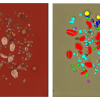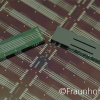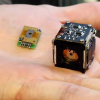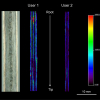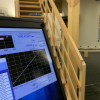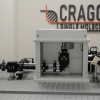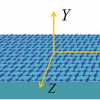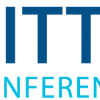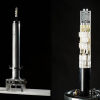Spectroscopy News
David Birch has been awarded the 2020 Dennis Gabor Award by the Institute of Physics (IOP). His contributions in the fluorescence sector included research on techniques, multi-disciplinary applications and developing instrumentation for measuring fluorescence lifetimes.
Mean accuracy can be improved by at least 25 % by modifying the combination of the aspects of the system.
Researchers at the Fraunhofer Project Hub for Microelectronic and Optical Systems for Biomedicine MEOS are now developing solutions designed to enable the analysis of breath gas for the diagnosis of disease including posisbly COVID-19.
Konica Minolta Sensing Europe BV has entered into a definitive agreement to acquire Specim.
Functional near infrared spectroscopy has been used to identify tinnitus in patients.
The Smart-HSI project will develop compact hyperspectral imaging solutions to be used in space.
A multi-reflection time-of-flight mass spectrometer has been used successfully to investigate atomic clusters at the University of Greifswald.
Professor Peter Lay from the University of Sydney has been awarded the Australian Synchrotron Lifetime Contribution Award by ANSTO, the Australian Nuclear Science and Technology Organisation.
Scientists have developed an optical elastography technique that could revolutionise the accuracy and ease to which health professionals can detect biomechanical alterations of cells and tissues.
The mineral olivine, thought to be a major component inside all planetary bodies, holds secrets about the early formation of the solar system, and an IR spectral region can be used to study it remotely.
This review discusses three emerging applications in MSI—clinical, pre-clinical and forensics—and the roadblocks to the expansion of the use of MSI in these areas.
A new 1 GHz solid-state nuclear magnetic resonance (NMR) spectrometer is now at field at University of Warwick.
A team of scientists and students from the University of Sheffield has published the blueprints for a specialist single-molecule microscope they built for a tenth of the cost of commercially available equipment.
Researchers have developed a new imaging spectrometer that is much lighter and smaller than state-of-the-art instruments while maintaining the same high level of performance. Because of its small size and modular design, the new instrument has obvious applications to airborne vehicles and even planetary exploration missions.
New research reveals that applying a magnetic field to a chiral metamaterial can change the way it polarises light.
Nuclear and atomic physicists and nuclear chemists of Mainz University and GSI are closely involved in the EU Innovative Training Network on Laser Ionisation and Spectroscopy of Actinide Elements.
A new, ERC-funded project, HiSCORE, aims to develop a method for high throughput screening using nuclear magnetic resonance spectroscopy.
Fluorescence spectroscopy can identify the geographical origins of wines originating from three wine regions of Australia and from Bordeaux in France with 100 % accuracy.


